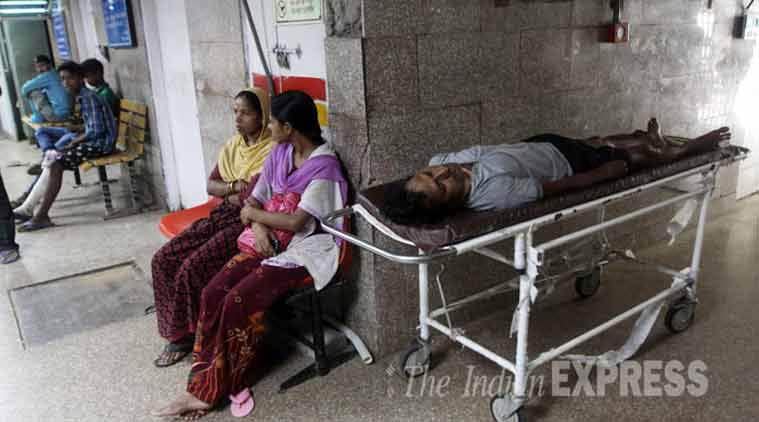The programme, devised to prevent impoverishment because of catastrophic health expenses, aims to provide annual health cover of Rs 5 lakh per family to 10.74 families listed as per “deprivation” in the socio-economic caste census.
An analysis of utilisation patterns of the Pradhan Mantri Jan Arogya Yojana — the NDA government’s flagship health programme — shows wide variation in average claims of states. States with already functioning secondary/tertiary care programmes, such as Tamil Nadu, Andhra Pradesh and Maharashtra, show 2-2.5 times the average spend per patient compared to traditional health laggards like Uttar Pradesh and Jharkhand.
PMJAY data till July 9 shows that of the total Rs 3,482.9 crore given out to settle claims so far, the highest share was of Gujarat, with Rs 748.1 crore, for 4,37,774 hospitalisations. Chhattisgarh came second with Rs 449 crore of claims and 5,69,456 hospitalisations, and Tamil Nadu third with Rs 439.5 crore in claims and 2,07,906 hospitalisations.
However, a look at the average claim size shows that Andhra Pradesh tops the list at Rs 28,709, followed by Maharashtra at Rs 25,333, Karnataka at Rs 25,075 and Tamil Nadu at Rs 21,141. On the other hand, the average claim size in Uttar Pradesh, with a total of Rs 145.7 crore claimed so far for 1,19,512 procedures, is just Rs 12,195.
Launched on September 23 last year, the PMJAY is the secondary/tertiary care arm of Ayushman Bharat. The programme, devised to prevent impoverishment because of catastrophic health expenses, aims to provide annual health cover of Rs 5 lakh per family to 10.74 families listed as per “deprivation” in the socio-economic caste census.
As and when states signed a memorandum of understanding with the Centre, their existing schemes — such as Arogyashri in case of Andhra Pradesh, the Chief Minister’s Comprehensive Health Insurance Scheme in Tamil Nadu, and the Mahatma Jyotiba Phule Jan Arogya Yojana in Maharashtra — were subsumed into the central programme.
Two states that are yet to adopt the PMJAY are Odisha and Telangana. West Bengal became a part of the scheme but walked out midway — having claimed Rs 14.1 crore for 14,777 hospitalisations in the brief period that it was a part of the scheme.
A senior officer of the National Health Authority said that the large divergence in the average claim size essentially reflects the robustness of the health system in states. “States like Andhra Pradesh and Tamil Nadu which have a robust public health system seem to be spending more on tertiary care. Same is the case for Maharashtra, where three-quarters of the hospitals empanelled are in the private sector. However in states such as Uttar Pradesh and Bihar, more money is being spent on secondary care procedures. This is a symptom essentially of the lack of capacity, infrastructure. The government needs to spend more in these states on infrastructure, we also need the private sector to invest in these states,” the officer, who did not want to be named, said.
In other words, in states which have capacity, the PMJAY seems to be moving towards subsidising catastrophic health spends, as it was intended to, while in the less well-endowed states, it is ending up meeting more basic health needs. For example, cataract surgeries had for months topped the list of PMJAY procedures despite the fact that there is an existing national programme for the purpose. It was essentially symptomatic of gaps in the public health system. That is why in August this year, the NHA decided to take cataract out of the list of approved procedures.
The exception to the health system robustness equalling average larger claim size is Kerala. The state which is known for its public health system claimed Rs 186 crore for 3,18,604 hospitalisations, with an average claim size of just Rs 5,851. This, the official said, is because of a large number of RSBY (Rashtriya Swasthya Suraksha Yojana) beneficiaries in the state who are a part of the programme now. The ceiling for RSBY payouts is Rs 30,000, so Kerala has ended up funding far more secondary care procedures. “It is a legacy issue,” the official said.
Source: Read Full Article


